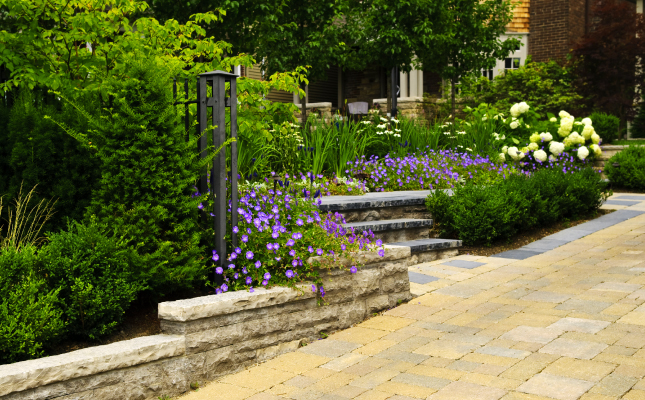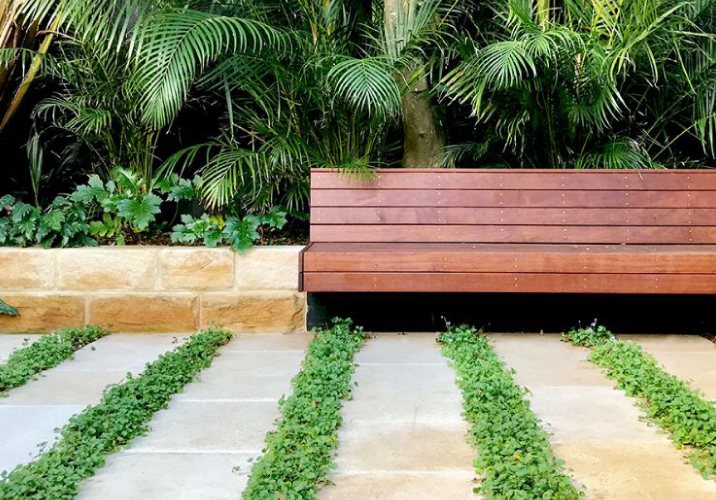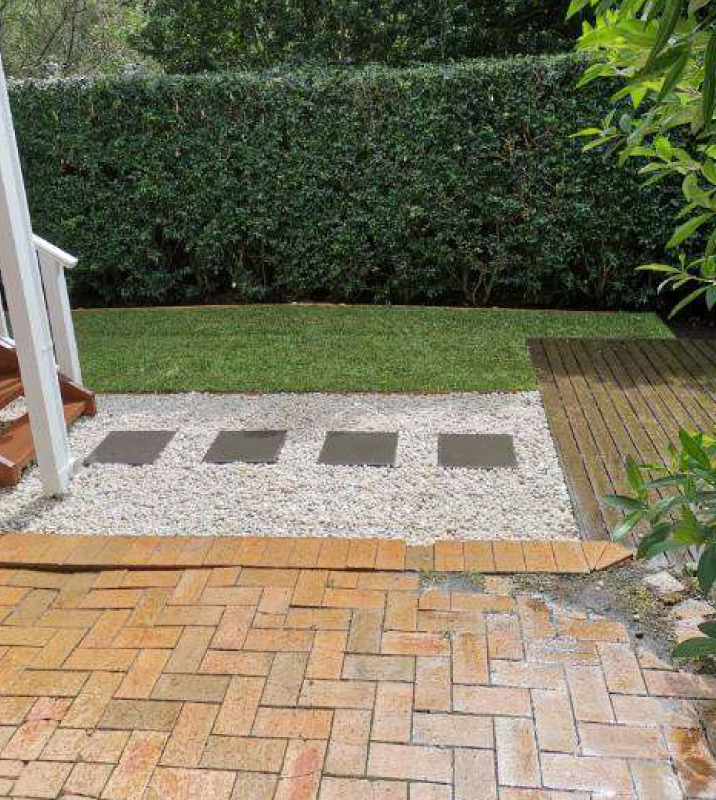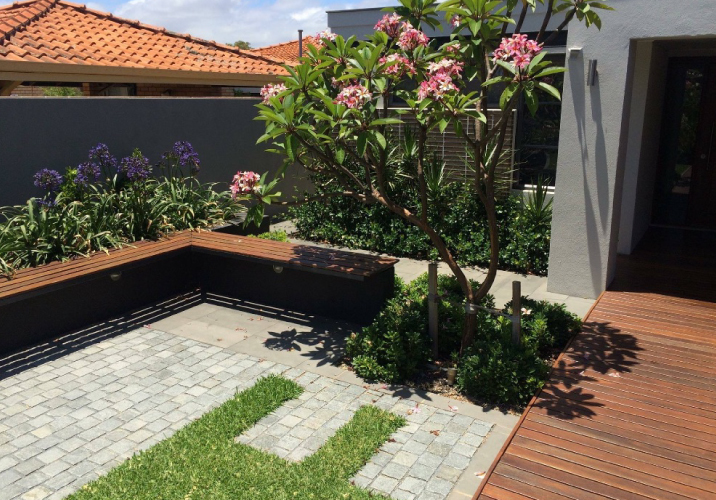
Find a local paving expert
- Inspiration /
- Outdoor projects /
- Outdoor living /
- How to choose your...
How to choose your pavers?
From colours to patterns, your guide to the best pavers for your place
Sometimes, a garden or yard just doesn’t feel complete without paving to tie everything together. However, it can be overwhelming deciding on a colour or pattern with such a variety of pavers and sones available.
How to choose a paving colour?
There is a large selection of paver colours to choose from. You can choose solid colours or designs that have a myriad of vibrant colours. The colour you select can help create the illusion of space, add depth, brighten up or tone down an aesthetic and create the perfect ambiance. When deciding on a colour for your pavers, here’s what you should consider.
1. The location
You will need to assess whether or not your paving area is in a sunny area or in the shade. Opt to use lighter pavers for areas not exposed to too much sunlight and darker pavers for areas that receive lots of sunlight. If the area is sunny sometimes and shady during other times, then choose a light-dark pattern.

2. Create the illusion of space with colour
Paver colours assist with the illusion of space and can create a warmer or harsher ambiance. When you pave a narrow concrete patio with light paving it creates a cheerful ambiance and makes the patio appear larger. Be careful though, as a very light paver used in a large area can make the area appear cold. For patios where there is lots of sunlight, it’s advisable to use softer tones. The use of clay tiles can do wonders for the transformation of a plain patio.
3. Further considerations when choosing colours
- Be sure to select a colour that blends in with the surroundings. Try to avoid matching colours but opt for colours that complement the area.
- For an expansive area such as your driveway, opt for multi-coloured pavers. You can use monotones for the rims andpavers with designs for the centre. You can add character and beauty with sharp coloured edging stones too. When using multi-colours on your driveway, you have the advantage of concealing small marks.
- Natural multi-colours can be used to create a classy look for your garden path or lobby when you apply it to your main area with a charcoal coloured edging.
How to choose a paving pattern
Before you start reading about paving patterns, here are a few key terms that you’ll need to know in order to understand the paving descriptions:
- Header – the paver’s shortest side
- Stretcher – the paver’s longest side
- Course– pavers set in a row
- Bond – completed paving pattern
Herringbone paving pattern
For this popular design, any kind of paver, bricks, or stones can be used. They are laid diagonally in alternate directions. The length of each joint is no longer than that of one and a half pavers. This design can be done at a 45-degree or 90-degree angle.

Basket weave paving pattern
As the name suggests, this design resembles a woven basket. Two rectangular pavers are positioned horizontally, with the next two in a vertical position. This is repeated until the designated area is completely covered. For added contrast and style, use different shades of pavers. Darker and lighter tones will really emphasise the design and create a lovely contrast. A single basket weave pattern will have alternating courses of single horizontal bricks and double vertical bricks.
Stretcher bond paving pattern
This is the simplest of all designs, also known as a running bond, the stretcher bond pattern is a simple, classic, and enduring paving pattern. Pavers are laid in the same direction next to each other – ensuring that each paver overlaps the one beneath it by half. The same way a standard brick wall is laid. By choosing to lay the pavers lengthways or widthways, you can make a certain area appear larger or smaller.

Stack bond paving pattern
This type of pattern is perfect for square pavers, and it’s incredibly simple and easy to build. Just lay the pavers evenly with an equal distribution all around. Then, you can use differently coloured pavers to create a pattern within the courses. Many stack bond paving patterns also have a border laid around the outer edges of the paving.
Stretcher/Header combination paving pattern
This design is created by using both the long (stretcher) and short (header) sides of the paver. As is the case with many other designs, you can create an even more stunning result by selecting different colours and shades. Alternate between paver sides and colours for the most captivating and intricate result.
Large format design
This elegant design consists of large square or rectangular pavers placed either close together or with larger gaps between them. The gaps can be filled by small plants, pebbles or even woodchips. This design really makes the paved area appear larger. This style is regularly chosen for outdoor entertainment areas, patios and walkways in the garden.
Radial paving pattern
By alternating between the long and short sides of the pavers, stunning rings are formed with a radial design. The herringbone design is also partially implemented with this design to form the core. This design can consist of rings running side by side or overlapping each other slightly.
Related posts
How much will your job cost?
The Oneflare Cost Guide Centre is your one-stop shop to help you set your budget; from smaller tasks to larger projects.



